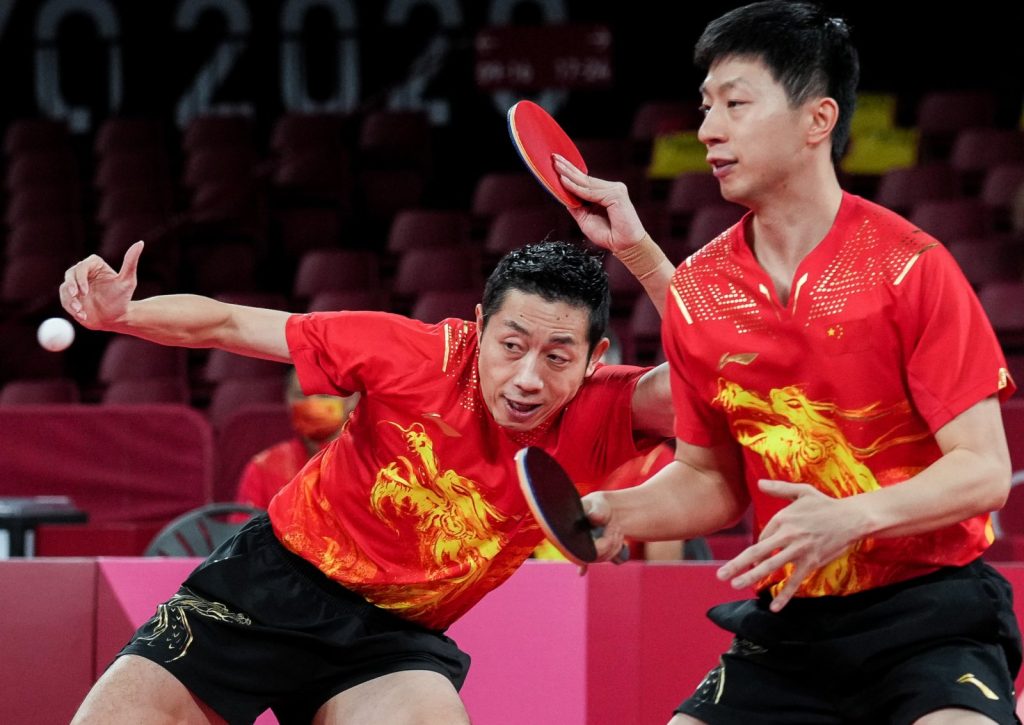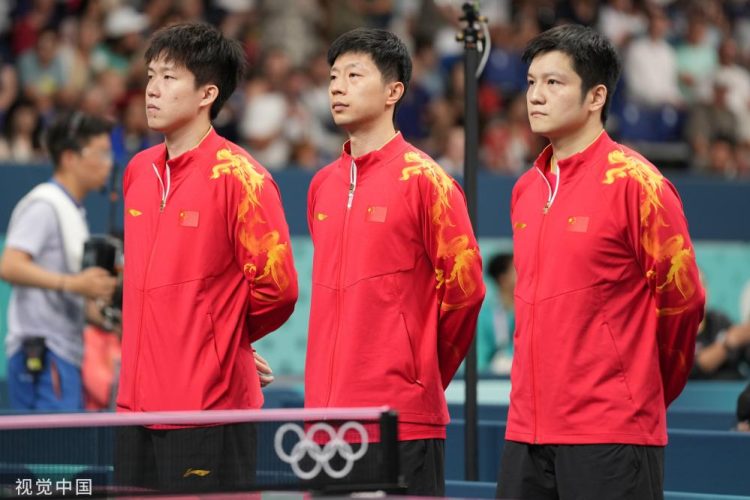China’s table tennis team has long been regarded as one of the most dominant and successful teams in the history of the sport. Over the years, the team has produced numerous world-class players, winning countless World Championships, Olympic gold medals, and World Cup titles. The dominance of Chinese table tennis is built on a legacy of technical excellence, physical preparation, and strategic depth that few other teams have been able to match. With the upcoming World Cup on the horizon, the question arises: Can the Chinese table tennis team continue their strong performance and maintain their position at the top of the sport?
This article will explore the current state of Chinese table tennis, the challenges they face, and their prospects in the upcoming World Cup. It will examine key players, team strategies, and the competition that could potentially derail their quest for another title.
1. The Legacy of Chinese Table Tennis
China’s success in table tennis can be traced back to the sport’s development within the country. Over the last several decades, the Chinese table tennis team has been a juggernaut, consistently dominating the global stage. From the 1980s, when Zhang Yining, Liu Guoliang, and Wang Nan helped China establish its supremacy, to more recent players like Ma Long, Ding Ning, Xu Xin, and Liu Shiwen, China has consistently produced top-tier talent.
The Chinese Table Tennis Association (CTTA) has created a training system that is both rigorous and effective. Players start training at a young age, often undergoing intense physical and technical development programs. The CTTA is known for its focus on building all-around skills, which has contributed to China’s unparalleled dominance in singles, doubles, and team events.
2. The Current Chinese Table Tennis Team: A Closer Look at Key Players
To understand whether China can continue its dominance in the World Cup, it is essential to evaluate the current roster and the players who will likely lead the charge in the upcoming tournament. While the Chinese team remains stacked with top players, there are several standouts who will play key roles in their pursuit of World Cup glory.
A. Ma Long: The King of Table Tennis
Ma Long, often regarded as one of the greatest table tennis players of all time, continues to be a central figure for the Chinese team. Known for his incredible consistency, physicality, and mental fortitude, Ma Long has won nearly every major title in the sport, including multiple World Cup and World Championship titles. His experience and leadership will be invaluable in the upcoming World Cup.
Despite being in his 30s, Ma Long’s level of play has not shown significant decline. His ability to perform in high-pressure situations, such as in previous World Cup finals, positions him as one of China’s key weapons. As the reigning Olympic gold medalist in men’s singles, Ma Long is undoubtedly the player to watch.
B. Xu Xin: The Left-Handed Maestro
Another player who is critical to China’s chances is Xu Xin, one of the most skilled and dynamic left-handed players in the world. Known for his unpredictable and attacking playing style, Xu Xin has been a regular feature on the Chinese team for over a decade. He is a master at using spins to confuse opponents and can make rapid adaptations during the course of a match.
Xu Xin’s versatility allows him to play both singles and doubles, and he has been a key contributor to China’s dominance in the sport for years. While he may not have the same number of titles as Ma Long, Xu Xin’s creativity and adaptability make him a strong candidate for the World Cup.
C. Sun Yingsha: The Future of Chinese Women’s Table Tennis
On the women’s side, Sun Yingsha has emerged as one of the brightest stars of Chinese table tennis. Known for her fast and aggressive playing style, Sun has been a rising force in international competitions. At just 21 years old, Sun has already captured several major titles, including the World Table Tennis Championships and World Cup titles.
Her consistency and mental toughness are standout features of her game, making her a formidable opponent. If she continues to develop, Sun could play a pivotal role in securing another World Cup title for China in the women’s competition.
D. Chen Meng: The Current World No. 1
Another key player to keep an eye on is Chen Meng, the current world No. 1 in women’s singles. Chen has been a dominant force in recent years, winning multiple World Cup and World Championship titles. Her ability to control the pace of the game, combined with her precise shot placement and tactical intelligence, has made her one of the most consistent performers on the international stage.
Chen Meng’s experience and her steady rise to the top make her one of the leading figures in the Chinese team for the upcoming World Cup.
3. The Challenges Facing the Chinese Team
While the Chinese team remains a dominant force in table tennis, there are several factors that could pose challenges in the upcoming World Cup.
A. Growing Competition from Other Nations
One of the most significant challenges for China is the rise of competition from other countries. Japan, Germany, South Korea, and Sweden have all produced strong players who are capable of competing with the best that China has to offer.
- Japan, in particular, has become a significant challenger to China’s dominance. Players like Tomokazu Harimoto (the youngest ever to win a World Tour title) and Mima Ito (a former World Cup winner) are capable of upsetting the Chinese players. Harimoto, in particular, has shown that he can challenge China’s best, and his growth as a player makes Japan one of the most serious threats to China’s continued success.
- Germany also has players like Timo Boll, who, despite being in the latter stages of his career, can still perform at a high level and will continue to be a strong competitor.
- South Korea and Sweden, with rising stars such as Jang Woojin and Kristian Karlsson, add further to the competitive mix.
Thus, while China remains the dominant force in world table tennis, the increasing strength of these international competitors could pose a serious challenge.
B. The Pressure of Expectations
Another challenge is the intense pressure that comes with being the favorite. The Chinese team, having won so many World Cup titles in the past, is always expected to deliver. This pressure can sometimes be overwhelming, especially when facing unexpected setbacks or tough competition. Maintaining a high level of performance while managing expectations will be critical for the Chinese players in the World Cup.
C. The Evolution of Playing Styles and Technology
Table tennis has evolved over the years, with new playing styles and technological advancements shaping the way players approach the game. Opponents of the Chinese team have improved their tactics, adapting to counter the aggressive spin and fast-paced game that China has historically excelled in. The ability to adjust to new playing styles and keep up with technological advances (such as the improvement of racket technology and playing techniques) will be crucial for China’s success in the World Cup.

4. Strategy and Team Dynamics: Will China’s Cohesion and Strength Continue to Shine?
A key component of China’s success has been the strength of their team dynamics. The Chinese Table Tennis Association has always prioritized teamwork and mutual support, ensuring that players complement each other’s strengths.
A. Doubles and Mixed Doubles: A Powerful Weapon
China has historically been dominant in doubles events, with players like Ma Long and Xu Xin forming one of the most formidable doubles teams in the sport. The Chinese team’s success in these events is partially due to their emphasis on teamwork, positioning, and anticipation.
With Zhang Jike and Ding Ning leading the charge in the past, the Chinese team has the experience and expertise to dominate doubles competitions. These events provide an additional avenue for China to secure gold and maintain its dominance.
B. Adaptation and Tactical Adjustments
China’s strength lies not just in individual talent but in their ability to adapt. Coaches are constantly analyzing their opponents and adjusting tactics to exploit weaknesses. In high-pressure tournaments like the World Cup, where the competition is fierce and matches are often decided by minute details, China’s tactical adaptability will play a major role in maintaining their dominance.
5. Conclusion: The Future of Chinese Table Tennis and Their World Cup Prospects
China’s table tennis team remains a dominant force in the sport, thanks to its incredible roster of players and unparalleled training system. While they face increasing competition from countries like Japan, Germany, and South Korea, their pedigree, experience, and depth of talent make them the favorites heading into the World Cup.
The likes of Ma Long, Xu Xin, Sun Yingsha, Chen Meng, and Liang Jingkun are all capable of leading China to another title, but they must overcome challenges from a more competitive field and handle the weight of expectations that come with their status as the reigning champions.
If the Chinese team can maintain their focus, adapt to new challenges, and continue to develop their young talents, they have every chance of continuing their reign in the World Cup. However, they must be prepared for the increasingly fierce competition from across the globe. Whether they can continue their dominance or whether the tides of table tennis will shift remains to be seen, but one thing is clear—China’s table tennis team will continue to be a powerhouse in the sport for the foreseeable future.


































Discussion about this post